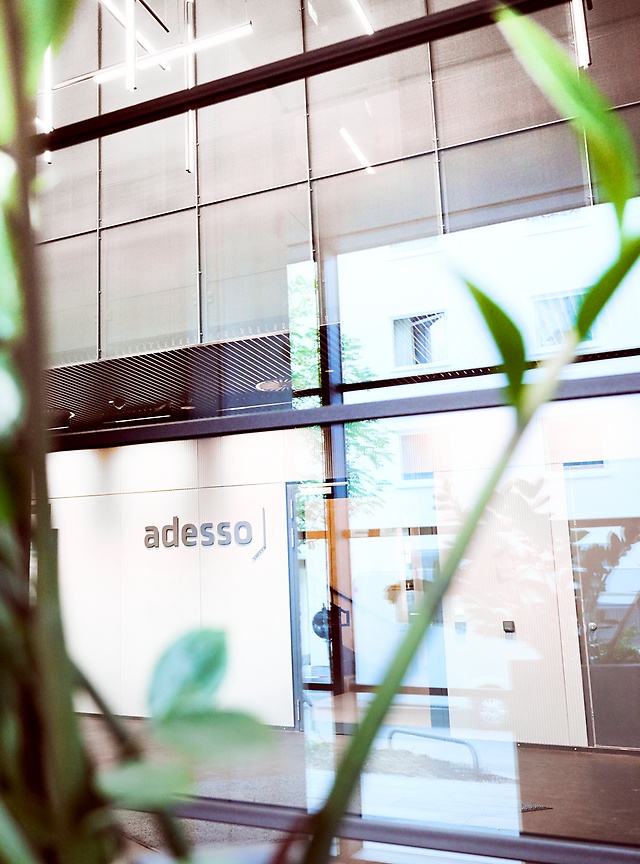10. August 2023 By Umut Sarac
What the discontinuation of DOPiX means for the insurance industry
2022 was an unsettling year for many insurance providers given the announcement surrounding DOPiX.
Quadient surprisingly announced that maintenance and further development of the customer communication management (CCM) system DOPiX would be discontinued in the next two to three years. A large portion of the German insurance industry is affected by this, with many providers forced to revise how they communicate with customers and modernise their processes as a result.
However, while insurance companies have basically been left with no choice other than to replace their CCM component, this can also be seen as an opportunity. Having to switch from one system to another opens up a number of doors, such as performing a comprehensive inventory analysis, identifying and eliminating redundancies, improving the quality and performance of resources as well as process optimisation.
Five challenges for insurance providers
1. The status quo – analysing inventory systems
A well thought-out and well-prepared replacement project is nothing without an inventory in the form of a fundamental analysis of the existing documentation.
The basis of this analysis is a compilation of all document templates currently in use, the print volumes (physical and digital), the variables used and their data sources (specialist systems, calculations, format and structure of input data) as well as the basic letter frameworks used in each case. A clean technical system structure must be ensured and supplemented with further technical requirements (such as output targets and formats, inserts, dispatch and duplicate checks).
This creates a solid basis for further planning (effort estimation, project planning, staff requirements, necessary skills, provision of services by clients).
2. Technology – between migration and integration
Installing and integrating the new system into a corporate landscape act as the starting point of an architectural adaptation.
It is important to ensure the old and new systems remain separated so that it is possible to operate them both at the same time without restrictions. Regardless of whether a company ‘just’ wants to replace its text system (that is, replace a small cog in the big wheel) or modernise its entire output system, there are still numerous aspects that have to be taken into account, such as integration via specialised applications (input), interfaces, adapters, data sources, models and mappings, storage, staging of resources, output channels and much more.
3. Migration – how insurance providers can switch successfully
The biggest challenge of any transition is figuring out the optimal way to migrate (required capacities, quality and speed).
The best solution for this would be a fully automated migration to the new environment in which all the resources can be edited, adapted and saved as desired. As things stand, there is no solution of this kind. Nevertheless, efficiency can be improved using various tools already available on the market thanks to partial automation in different areas of the migration (automated redundancy analysis, duplicate identification, test automation and so on).
Every text system and every user has their own philosophy. The functions that DOPiX provides are implemented in other solutions in a different way, meaning a 1:1 migration does not make much sense. The aim is to get the results in the target system, not the ‘spaghetti code’ from DOPiX.
A new start is the perfect time to analyse your inventory. It gives you the opportunity to get rid of legacy issues, minimise redundancies, question outdated or historically grown structures and optimise them should you need to.
There is another way to achieve the goal. The project can also be implemented as a complete redevelopment of the existing inventory. The risk here, however, is ending up putting time and effort into the same things twice, which would result in the entire procedure proving uneconomical and unprofitable.
4. The new role of the administration
Change often brings uncertainty. Employees who have been working with DOPiX for years now have to expand their skillset, participate in training courses and get certified in order to learn how to use a new piece of software so that they can continue using all of its features.
Seeing as it is impossible to migrate 100 per cent of data, you will always need to post-process the result of the migration. This means that the users on the insurance side must be trained in good time in order to maintain operations for the period after the migration.
In addition, managers should not forget that a new basic letter framework must be created for all document templates.
5. Budgeting for change
There needs to be an immediate change in the way that long-term budget planning is done so as to take into account the project costs and expenses involved in modernising document management.
The effort needed to choose software (tendering, testing, evaluation, selection) should not be underestimated. In addition, there will be considerable effort needed for migration, adaptation, testing and training.
Why insurance providers should be proactive
Replacing the DOPiX (CCM) system is something that insurance providers need to deal with right away. Otherwise, they run the risk of being stuck with an old, high-maintenance (CCM) system that is not up to date and will not be further developed. There are plenty of alternatives on the market, but not every option is the right one. The challenge is to find the right strategy and the perfect solution. We recommend working with experienced consultancy firms to generate the optimal added value.
How does adesso help insurance providers?
We provide consultancy when it comes to choosing a new (CCM) system adapted to your individual needs. Furthermore, we support the implementation strategy, the creation of a migration roadmap, the selection of the methodology as well as the involvement and training of the stakeholders. You benefit from our experience and knowledge in the area of migrating to a new (CCM) system as well as replacing your existing component.

